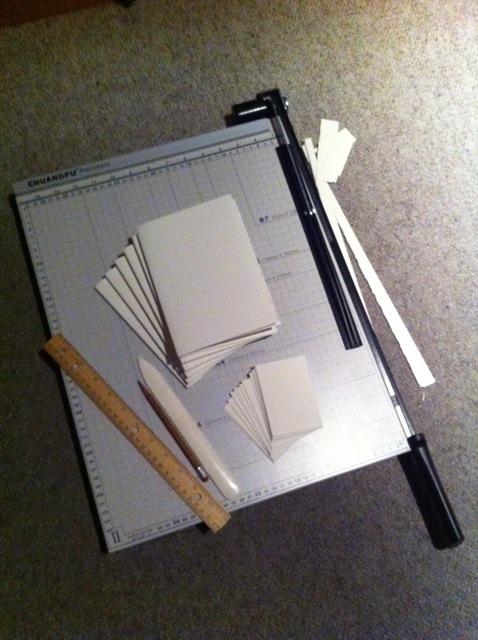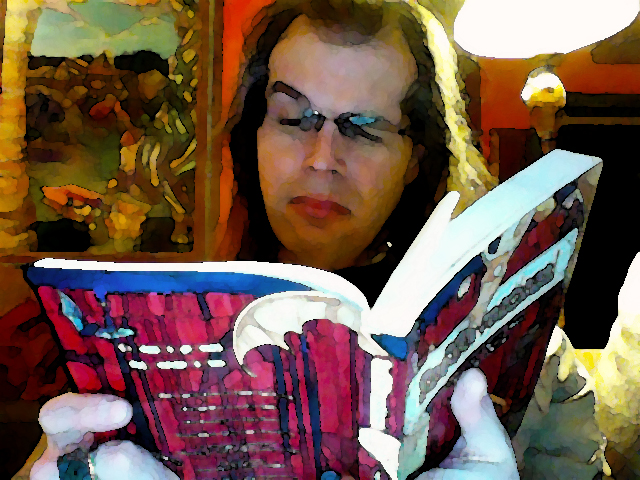
Writing Rules
Anyone who seriously tackles the craft of writing is likely to have encountered a writing rule, like “Show, Don’t Tell,” or “Never Begin a Sentence with a Conjunction.” “Don’t Split Infinitives” and “Never Head Hop” are also popular. The granddaddy of all of them, “Omit Needless Words,” is deliciously self-explanatory … but the ever baffling “Murder Your Darlings” is a rule so confusing it deserves its own essay.
Writing rules can do a lot of good. For example, “Show, Don’t Tell”—meaning, draw word pictures that create the effects you want, rather than explicitly telling the reader what they should feel—can make your writing more direct, more immediate, and more effective. For example, compare:
The boring professor put Mary to sleep.
with
Professor Smith droned on until Mary’s head thunked onto her desk.
The first version tells you exactly what to think about the professor—he’s boring—and precisely what he did—he put Mary to sleep. The second version has the same information, but it’s no longer explicit: we have to infer that he’s boring from the sound of his voice, and infer that Mary fell asleep from what happened to her head. As that information is delivered, we’re also treated to sounds, images and a physical action, which together create a brief but vivid scene.
The second version has more words … but more interest.
Rules and Judgment
But wait! More words? Doesn’t that fly in the face of “Omit Needless Words”—the command to remove from your sentences every word which doesn’t carry its weight in meaning? Well, yes, it does. Writing rules can conflict with each other, and you have to use your best judgment when applying them.
In the case of “Omit Needless Words” at war with “Show Don’t Tell”, no matter how good you are, you’re unlikely to come up with a way of showing “the boring professor” in fewer than the three words it takes to say “the boring professor.” So you as a writer have to exercise your best judgment on whether your story or essay is better served by getting to the point … or illustrating it concretely.
The Danger of Writing Rules
The real danger of writing rules is not that they can conflict; conflicting rules can obviously be resolved by exercising judgment (though what that resolution should be is often far from obvious). No, the real danger of writing rules is when they do not conflict. When they clearly apply. And can be overapplied.
Unlike the laws of physics, the rules of writing don’t apply everywhere. They’re heuristic: rules of thumb that don’t hold in every situation. The reasons behind this are very deep. Some of the reasons are buried in what makes writing effective. Some are a product of how writing rules are created. But mostly, they’re a product of how writing rules are applied. Only by understanding the seductive power of rules—and the limits of what rules can do, even in the best of all possible worlds—can we understand the Rules Disease and how to fight it.
What Makes Writing Good
Writing is good if it is effective at evoking in the reader what the writer wanted. But writing is not effective because of how it conforms to a set of rules; writing is effective because of how it is processed by the human brain.
The human brain doesn’t process stimuli using strict rules. It’s a robust, error-correcting, creative understanding engine resistant to all kinds of noise. It can tolerate misspoken sentences, broken grammar, misspelled words, and even corrupted lettering. Take a look at the following phrase (taken, with apologies, from Doctors Selfridge and Seuss):
T/-\E C/-\T IN T/-\E H/-\T
Most of us have no trouble reading “The Cat in the Hat,” but how? The “H” and the “A” in “the cat” are actually the same shape—the ambiguous figure /-\. Fortunately, your brain naturally fills in the gaps, or doesn’t, depending on the context that shape appears in. The letters around that shape actually change your interpretation of the shape. This works for more than just mistakes: think of a lowercase ‘l’ and uppercase ‘I’, or an uppercase ‘O’ and the number ‘0’. In handwriting, these can be almost identical, but we rarely have problems telling them apart, based on our experience.
Scientists who study reading have different names for this phenomenon. I don’t want to overstate the level of consensus that scientists have reached, or understate the enormous amount of work ahead of us to truly understand human language. But the purpose of the picture of the huge stack of books at the head of this article was not to show how many rules there are—but as a brute act of credentialing, to show the briefest slice of the immense amount of work scientists have done to show that language is understood through the interplay of multiple sources of knowledge.

When we hear sounds, we use the movement of the speaker’s lips to help us figure out what they’re saying, something that cognitive psychologists Harry McGurk and John MacDonald found when dubbing tapes in their laboratory. When we perceive letters, we use the word that they appear in to help us decipher them, something that psychologists James Rumelhart and David McClelland modeled with parallel distributed processing. When we understand sentences, we use the whole history of speech we’ve heard to make sense of it, something computer scientist Eugene Charniak modeled with statistical language learning. Even understanding the simplest stories can involve reinterpreting our most basic concepts, something artificial intelligence researchers Kenneth Moorman and Ashwin Ram modeled as creative understanding.
There are limits to this, of course: as linguists like Ray Jackendoff and Jerry Fodor are fond of pointing out, you can’t not read words you see, and your ability to perceive letters is not affected by what you ate for breakfast. But even they argue that at the level of meaning, when readers try to put together what a story is about, they draw on every resource of information available to them.
The point is that at almost every level that scientists have studied, readers don’t use strict rules, but instead use their past experience as a guideline to try to piece together some consistent interpretation of the squiggles they’re reading.
A complete story is the same way: any rule can be broken, as long as there’s some interpretation consistent with our experience. You can write a complete story without breaking a single rule, but if there’s a powerful effect you want to achieve, you can break any rule to make the story have the impact that you want.
Literature is littered with examples. Faulkner writes sentences three pages long, but Hemingway writes ones three words long. E. E. Cummings plays with punctuation, line breaks, and spaces; but Shakespeare writes entire plays in iambic pentameter. Each of these striking stylistic choices makes sense given the way each author put their story together. Each choice makes sense … in context.
Where Writing Rules Come From
But writing rules don’t have this contextual knowledge embedded in them. They’re free floating. No matter how pithily worded, writing rules amount to IF-THEN triggers, specifying a condition that can match a story and suggesting a course of action—or, more often, just suggesting “don’t do that.” But if good writing is contextual, why do we use tools that are context free?
I don’t know the history of all writing rules, but I do know how writing rules are created, used and applied in the writing communities I’m a part of. In my experience, writing rules are created when readers, writers and editors reflect on a story that worked for them—or, more likely, one that didn’t. They find a place in a story which didn’t work, identify a flaw, and create a rule that helps them fix it.
I say a story because, while ideally rules should apply to many stories, in my experience the process of creating rules begins when a reader encounters a story which unexpectedly didn’t satisfy them—and reflecting on it awakens in them the idea that writing could be systematically improved.
For example, I and my writing colleagues use “The Sharply Dressed Man” rule:
In dialogue with an embedded tag, such as “Stop,” he said, “or I’ll shoot!”, if the name of the character speaking is a long noun phrase, as in “the sharply dressed man said,” consider putting the verb first, as in “said the sharply dressed man”—or rewriting the sentence to make the long embedded tag unnecessary.
This rule was created when I was unexpectedly disappointed by a turn of phrase in the published version of one of my own stories, “Steampunk Fairy Chick.” To avoid complicating the story I had several unnamed characters, but to keep them straight the awkward phrase “the sharply dressed man said” got itself embedded in a chunk of dialogue that really needed to be split in the middle for rhythm. Swapping the verb fixed the rhythm so that the sentence was clearer, but I could also have given the character a name, rewritten the dialogue to rework the rhythm, or rewritten the scene so the speaker was clear with a simple “he said.”
As writing rules go, it’s not the greatest one. I did spend some time reading over the story to try to analyze whether this was a pattern, but ultimately I only looked at that one story. And the reason the sentence didn’t work may have been more a product of its context and less a product of constructions like “the sharply dressed man said.”
This problem isn’t one we can easily think our way out of by analyzing the sentence and the story more carefully, because reading isn’t just an error correcting process: it’s an unconscious process. More precisely, it’s an unconscious process that produces our conscious experience. We don’t have access to all the details of our mental processing; we only have access to the output. Scientists like Jackendoff and Fodor argue our minds are built of modules—separate regions of the brain and thought whose innards are at least partially hidden from the rest of the mind.
When something goes wrong, we construct explanations based on what we perceive—but scientists have found these conscious explanations are often fictions masking real problems that are much deeper. This happens most dramatically with patients who have brain damage or surgery splitting one side from the other; the cognitive scientists Michael Gazzaninga and Roger Sperry found that the left side in particular would make up bizarre explanations for the behavior of the right, and attributed it to a module they call the left brain interpreter.
But even healthy people have this problem, most spectacularly when we do something that conflicts with our intentions and later alter our perception of our own intentions to fit our actions, a process that cognitive scientists Leon Festinger and Merrill Carlsmith called resolving cognitive dissonance.
The point being, the rules we accept as being “right” about a story are fodder for our left brain interpreters, and when we encounter something that makes us queasy, the interpreter uses the rules it knows to help explain that.
But the rules can only apply to the text that we see, and our understanding of the story is informed not just by that line but by everything we’ve read up to that point. So we may be tempted to blame the line we just read when our experience of reading a story is disrupted—but that’s like blaming the tip of the iceberg for our woes, when the real problems may lurk beneath the surface.
Experienced readers, writers and editors handle this problem by paying close attention to context: by looking at supposed offenses in the context of the overall story and making a judgment call about whether to correct them. But a writing rule by definition is divorced from that context: to be a rule it must be generalized enough to be applied to many stories and many contexts, an IF-THEN, a free floating bomb ready to drop its payload whenever its precondition is satisfied.
Where Writing Rules Go Wrong
Well, what’s wrong with that? Shouldn’t you, as an author, exercise your own judgment about whether to apply a rule? Certainly. But the problem is that other people can apply this to your story … whether or not there’s a real problem.
Think back on “The Sharply Dressed Man” rule. It was created by a confusing sentence in a particular story, but it’s no longer about confusing stories: it’s about sentences with longer dialogue tags. In reality, a sentence with a two-word “he said” can be confusing, and one with a fifty-word Faulknerian mini-epic can be clear—based on context, and content. But once you’ve learned “The Sharply Dressed Man” rule, you start to see it everywhere—and can flag every instance, whether they’re confusing or not—and whether fixing them will help the story or not.
“Master” writers and editors may complain this doesn’t apply to them—may complain that you simply have to learn when to apply rules—but in the trenches, out in the workshops and comic shops, in the writing groups and critique circles, where novice and journeyman writers are working with novice and journeyman editors and exposing their stories to beta readers and critics of all sorts, there are a thousand free floating writing rules and a thousand policies on how to apply them.
One policy I’ve often encountered—even from very experienced editors and beta readers, mind you—is to mark every instance of a rule whether it affects the story or not, leaving it up to the author to decide what to do with them. For me, this undermines the value of criticism: because you can’t, by definition, see your story how others see it, you depend on others to recognize problems in your story that you can’t see, whether that person is a writing partner, beta reader, editor, fact checker or copyeditor. But if rules are always being applied, regardless of whether the story is effective, then the signal coming back is not whether or not the story is effective—but whether it satisfies a checklist. And you can ALWAYS flag a story that violates the rule, regardless of how effective the story actually is—and some critics do.
This is the Rules Disease.
The Rules Disease
Every writer needs to learn their craft. Every writer needs to learn the rules. But some rules are in conflict (“Omit Needless Words” and “Show Don’t Tell”) some are contextual (like “The Sharply Dressed Man”) and some are just plain wrongheaded (see the history of the “Don’t Split Infinitives” rule on Wikipedia).
Even if the rules were perfect, following them would still be no guarantee of success. It’s a mathematical law that no set of rules, no matter how extensive, can simultaneously capture every possible truth and avoid every possible error. The formal name for this law is Gödel’s Incompleteness Theorem, but in this context the consequence of this limit is that if a story is a configuration of words, its effectiveness is a property of that configuration, and there is no set of rules you can create that’s guaranteed to capture that property completely. In other words, there is no substitute for reading a story and asking the question: is it effective?
And so every writer must learn to use judgment when applying the rules to their own works or when critiquing the works of others. But when rules become free floating, divorced from composition and judgment, they become a temptation. Writing rules are often pithy and easily repeated, spreading through writing communities like a plague. Writing rules are often clear and easily applied, giving us ready tools when trying to critique a story. Learning writing rules gives us a sensation of power—and when divorced from judgment, a false impression of wisdom.
The Rules Disease is endemic in the writing world. It crops up everywhere groups of writers gather in close proximity, exchanging ideas about their craft. Individual writers find rules that they consider their secret weapons; writing groups collect rules that become their common knowledge; editors find rules that become their sacred law. Everywhere groups of writers pick up their own strains: their own genome of rules that they pay attention to, possibly to a fault.
Curing the Disease
The cure, of course, is not to give up on writing rules: using them correctly can help a writer perfect their craft, or help an editor hone a story. The cure is instead to recognize that blindly following rules does not produce good writing.
Put more strongly: there is no writing rule that must be followed in order for a story to be effective. So it does not help anyone—not a writer, not an editor, not a beta reader, not a critic—to go through a document looking for violations of a rule for its own sake. That will produce a list of warnings without meaning, and following those warnings will produce stories that only satisfy checklists.
Instead, to use the rules, you should upend them. Rather than reading stories looking for violations of the rules, read your stories with an ear to whether they are effective—and if not, then use the rules to help you figure out how. Used this way, writing rules can make much easier the difficult process of parsing the unconscious sources of our discontent into a conscious explanation.
But even if you do find a violation of the rule, think carefully about whether the violation is really causing the problem, or whether the problem has another source. Because no matter how much you want to convince yourself you understand your own subconscious processes, you don’t. Your subconscious is faster than you, and just because it gets indigestion, that doesn’t mean you can always figure out why. A rule can help you understand why, but the seductive power of the IF in its IF-THEN can also trick you into thinking you understand the problem when you really don’t.
While it isn’t always possible, we should critique our stories with the same care that we compose them. We should strive to improve our critique with the same effort that we put into our writing. Our critiques should have real value that can genuinely help us improve our stories. And we should no more mechanically apply rules in critique than we would apply them mechanically in writing.
In the end no rule can substitute for the exercise of good judgment.
A Case Study
Just as I was finishing this essay, I encountered a writing rule in the wild and had a chance to test my theories. I was polishing this essay during writing sessions at a recent writer’s group, but since editing involves jumping around in a document and continuity is easier on listeners, during reading sessions I was reading from my novel JEREMIAH WILLSTONE AND THE CLOCKWORK TIME MACHINE. Then one of my trusted beta readers pointed out that there was a sentence in passive voice, which I’ve highlighted in bold below:
Then she clocked him hard on the jaw, and he went out again.
The sounds of approaching sirens began to be heard in the distance.
“We gotta go,” Marcus said. “Airship girl! We gotta go!”
Aha, the perfect test, I thought, so I asked: “Why did the sentence bother you?” My beta reader had a great response: “The sentence threw me for a loop. It didn’t sound like the style of the rest of the passage. Passive voice was the first thing that jumped out at me as a possible problem.”
So, consciously or unconsciously, my beta reader was already following the strategy I’ve recommended, but simply hadn’t told me why: she invoked the rule without first telling me that the sentence had bothered her.
But if you look at the sentence, passive voice is only one of the sentence’s problems. Think about “Omit Needless Words”: sirens, the sound of sirens, and hearing sirens are redundant. The word ‘siren’ can refer to a physical object, a horn, or a sound, the wail those horns make. But once you’ve said you’ve heard a siren, saying you’re hearing the sound of a siren is redundant. Furthermore, taken out of context, “began to be heard” also seems unnecessary, because when you hear a siren by definition you started to hear it at some point. In this case, “began to be heard” is not unnecessary, because our heroes had just disabled a police car’s siren in the next lot, so saying that a siren “began to be heard” provides new information. And identifying that new information is the key to fixing the problem.
I don’t think this is that bad a sentence. It’s National Novel Writing Month churn, quickly banged out, but I know why I wrote “Jeremiah heard sirens” that way: because the sound of the sirens is slowly growing in the distance, and I wanted to stretch out the description to stretch out the perception in the reader’s mind.
But there are better ways to do that, and better ways still to convey the information that they’ve started to hear sirens again, that the police must be sending reinforcements, and that it’s urgent that they go. So the solution is not to tweak the sentence: it’s to annihilate it entirely and deliver the needed information in a completely new way.
Then she clocked him hard on the jaw, and he went out again.
“We gotta go,” Marcus said, glancing over his shoulder. Jeremiah heard sirens in the distance, approaching fast: the police were sending reinforcements. “Airship girl! We gotta go!”
Now, I’m not convinced this is the perfect replacement: two of my editors disapprove of placing multiple character names between dialogue tags, because they think it can confuse readers. But this version is stronger than the last.
(Full disclosure: since the above paragraph was written, I’ve further refined the sentence to read “Sirens wailed in the distance,” removing the confusing name on the prompting of the mental ghosts of that prior editorial feedback—but I’m still not happy with the revised version. Yet. SO the above version stands. For now.)
SO ANYWAY, based on this editing experience, this is what I recommend: if something bothers you about a story, say what bothers you, then point out possible violations of the rules. That should be a starting point for thinking about the purpose of the segment of the story, what it should be achieving—and where it fails.
If you understand why something is failing, then you can fix it—with a deeper and better fix than just correcting a violation of a rule.
Further Reading
The writing rules I mention are ones I’ve heard from many sources, but the granddaddy of them, “Omit Needless Words,” is from Strunk and White’s The Elements of Style, which every writer in the English language should read.
The “T/-\E C/-\T” example, which illustrates how surrounding evidence can change how we perceive the same stimuli, originated in Oliver Selfridge’s paper “Pattern Recognition and Modern Computers“, but it and parallel distributed processing models like it were discussed more thoroughly in James McLelland, David Rumelhart and Geoffrey Hinton’s paper “The Appeal of Parallel Distributed Processing” in the PDP books, from which the illustration is thieved. The Cat in the Hat, of course, is by Theodor Geisel, known to the world as Dr. Seuss.
The McGurk Effect is discussed in Harry McGurk and John MacDonald’s paper “Hearing Lips and Seeing Voices,” but a more engaging illustration was done by the BBC on Youtube and is discussed in depth on Wikipedia.
Eugene Charniak discusses “old school” methods of understanding written text with grammar and spoken texts with statistical rules—and how scientists now build statistics directly into grammar based on large corpora of text—in his book Statistical Language Learning, a topic also briefly discussed on Wikipedia.
Kenneth Moorman, who started out his work using an “old school” grammar parser but now thinks Charniak is on the money, was my cubemate in graduate school. He wrote a program called ISAAC that read very short science fiction stories, and demonstrated that some of the simplest possible stories required creatively reinterpreting concepts. Kenny and my thesis advisor Ashwin Ram edited a book called Understanding Language Understanding with a couple of chapters on this approach.
While a careful read of their models supports my thesis that understanding a text draws on all available information, neither Ray Jackendoff nor Jerry Fodor (nor even I) would argue that language understanding is infinitely plastic, and the fixed nature of our low-level language models no doubt informs many grammar and stylistic rules. However, both of them agree with my point that we don’t have full conscious access to the modules with which we are understanding language, so our ideas of why we don’t like something are often a guess.
“Steampunk Fairy Chick” appears in the UnCONventional anthology, but the article where I discuss how I was unpleasantly surprised by a few turns of phrase once I saw them in print, and thereby came up with “The Sharply Dressed Man” rule, appeared in last month’s column on this blog.
Michael Gazzaniga and Roger Sperry’s work on split-brain patients and the left brain interpreter is discussed thoroughly in the chapter on consciousness in Gazzaniga, Richard Ivry and George Mangun’s textbook Cognitive Neuroscience. The problem of cognitive dissonance and how we resolve it by editing our own beliefs was tackled by Leon Festinger and Merrill Carlsmith and is discussed in depth in Daniel Wegner’s The Illusion of Conscious Will.
The limits of prescriptive grammar rules (and of purely descriptive ones as well) are discussed at length in David Crystal’s The Cambridge Encyclopedia of Language. The “Don’t Split Infinitives” rule is described in depth on Wikipedia. The upshot of all this is that languages do not ‘decay’; they simply change, something discussed in the Encyclopedia of Language and in Jean Aitchison’s Language Change: Progress or Decay, also available online.
Finally, my opinions are my own. I may have been trained as a cognitive scientist, but I am not a practicing cognitive scientist: I’m a writer. I haven’t done experiments to verify my hypotheses about rules; I’ve used existing experimental evidence and the theories built upon it to synthesize, engineering-style, an approach to dealing with texts and applying writing rules. But I could be wrong.
As always, your mileage may vary.
-the Centaur
 Tell us about your current writing projects!
Tell us about your current writing projects!





